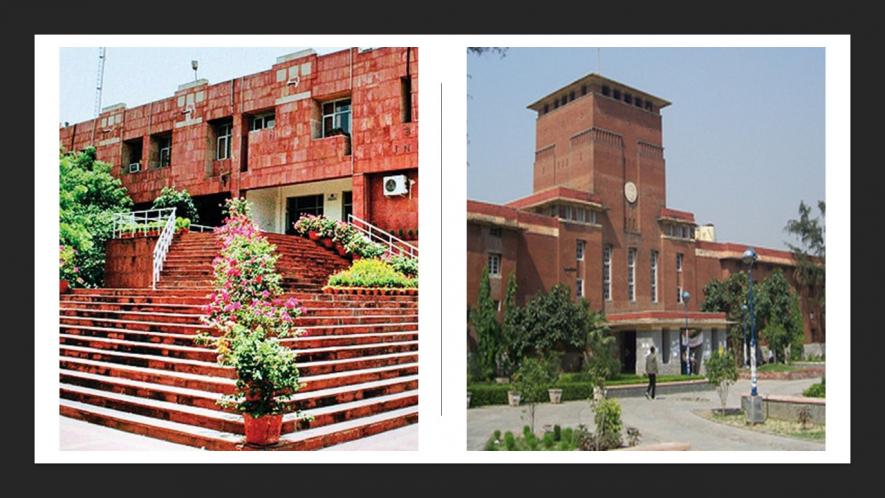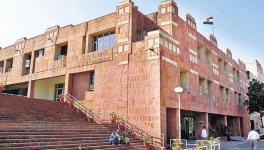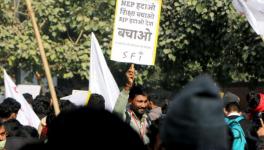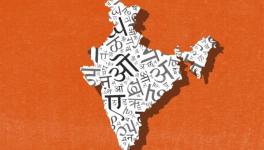What NEP Could Have Learnt from Delhi University and JNU

Education is essentially about triggering the imagination and making students think outside the box. This possibility has severe limitations, though, mostly in the form of exigencies such as the nature of available employment and the social environment. To foster an education system that creates thinking minds requires treading the difficult path of experimentation while not letting go of the goals of quality, inclusiveness, professionalism and innovation. And a university is a space to achieve all of these goals—not one or some of them at the cost of others.
India has had many such experiments to find a path that suits her own requirements while demonstrating a willingness to learn from the West and the rest of the world. This openness was the driving force of India’s efforts in the higher education field until the 1990s. The New Education Policy 2020 that is now sought to be introduced seems to be oblivious of this history as it beats education down with both the stick of the market and imposes on it the burden of “ancient knowledge”. What is forgotten is that knowledge cannot be dug up from out there; it needs to reinvented constantly.
It is not that India’s past experiments in education always succeeded, but we could still have learnt from them when framing the NEP instead of what we seem to be doing—abandoning all we have gathered for an education policy that simply lowers the threshold of education to merely imparting information and basic skills. Vocationalising education and privatising it puts a full stop to the experimental aspects of education. This creates a surreal situation of market forces conjoined with false commitment to supremacy of India’s ancient culture.
India’s once-robust experiments in higher education can be partially made sense of in contrasting two premier universities created in Delhi: Delhi University and Jawaharlal Nehru University. A study of these two institutes also makes clear what minute details and issues need attention to make education an experiment in quality, inclusiveness, professionalism and innovation. Delhi University is one of the oldest universities, set up in the 19th century to cater to a growing demand for higher education, with around 70 colleges under its aegis. From its inception it was essentially geared towards undergraduate teaching, but has departments for research and post-graduate teaching as well. JNU, by contrast, was started in the 20th century primarily as a research university. It was much smaller in size from inception, had no colleges, and features a closed campus. Its founding vice chancellor brought the best researchers from all over India as faculty. Both universities produced a different ethos and have their own advantages and disadvantages.
From the very beginning, Delhi University had a more centralised administration and colleges taught syllabi drawn up by departmental faculties. By contrast, in JNU, the faculty enjoyed very slim administrative interference from the inception of the university, but the teachers were given far more autonomy in envisaging the syllabi and pedagogy. This autonomy has proved helpful in introducing and revising courses periodically and in balancing professionalism with the need to cater to a socially diverse student composition. Teaching could combine with faculty research interests in JNU, which is a unique feature. The small size of classrooms, also from the beginning, enables more intense academic discussion in and beyond teaching sessions.
Delhi University, in contrast, was started with large classrooms for it focused on becoming the avenue of higher education for a much larger number of aspiring scholars. This contributed to the university’s very different teaching ethos and distinct teacher-student relations. Most students who passed out of colleges in Delhi University still tend to stay on for post-graduate and research studies. College teachers have ended up with a higher teaching burden and can rarely pursue their research interests, and there is the added disadvantage of poor infrastructure and facilities. But the close rapport between teachers and students compensates for these limitations. Most people who passed out from Delhi University in the past had the option of joining one of its colleges as teacher, while most students passing out of JNU spread across the country. This has remained the trend in both universities.
JNU had a more structured focus in terms of its attention to continental theories, while Delhi University remained closer to the ground. JNU came to be known for research and left-oriented student politics which, to Delhi University students—and those in other universities—still feels like it is a closed world that exists in a self-created bubble. Delhi University has always been open to the vagaries of Indian realities. The unique admission policy of JNU gives extra “deprivation” points to applicants from backward regions, which gives it a diverse composition. Despite this it came to be known as an elite university, due to its proximity to the state and its closed-off environment. Delhi University was more open to political and cultural exigencies, and it remains as such.
This array of contradistinctions have led to the creation of two very different kinds of cultures of higher education. Delhi University fosters more personal ties between faculty and students, who often take up academic pursuits together. The possibility of more organisational activities and more joint student-faculty institutions became possible. On the other hand, JNU ended up with a more professionalised atmosphere, where teacher’s relations with students are more impersonal. It also has a relatively more individualised environment when it comes to research pursuits. Besides, JNU students are employable nationally, as they carry with them the specific mark of being professionally trained, and also of being more ideologically oriented. Students from Delhi University are absorbed in colleges with a ear to the ground.
What is common to both universities ever since they were founded is that they are perhaps responsible for the decline of higher education in much of North India. They poached most of the available talent. They have made Delhi a leading hub of academic activity, but they deprived quality education and faculty to many others parts of India. The difficult choice India faced, of creating a few globally-leading universities or keeping the average quality of institutions high contributed to the situation we confront today. After the 1970s, higher-education policy consistently tilted India towards the former, and we have ended up with a very few premier institutions and a mass of institutions that make a poor average, falling far below the standard of better-known institutions. We created an oasis of quality amidst a sea of mediocrity.
To be clear, both these experiments were a beginning but have left many issues unresolved. Why in all these decades more universities did not contribute to improving the quality of higher education needs to be considered by policymakers. Most students who came from mofussil towns wished to settle down in Delhi for the obvious advantages it offers. Yet as Delhi’s academics got globally connected over time, it lost touch with the local, as reflects in the research orientation of its two leading universities.
What higher education in India should be debating today is what we learn from the limitations of this experiment and find new ways to provide quality and professional education that is not disconnected from local realities. We need to explore how personal compassion can be combined with professional ethics in the education system; where to draw the line between the global and the local; how to maintain quality higher education institutions without centralising them into exclusive hubs. But the NEP seems to be moving further away from both the models of the past and into a soulless education system that will seldom innovate and rarely encourage a life of the mind.
Manindra Thakur is associate professor, CPS, JNU and Ajay Gudavarthy is associate professor, CPS, JNU. The views are personal.
Get the latest reports & analysis with people's perspective on Protests, movements & deep analytical videos, discussions of the current affairs in your Telegram app. Subscribe to NewsClick's Telegram channel & get Real-Time updates on stories, as they get published on our website.























